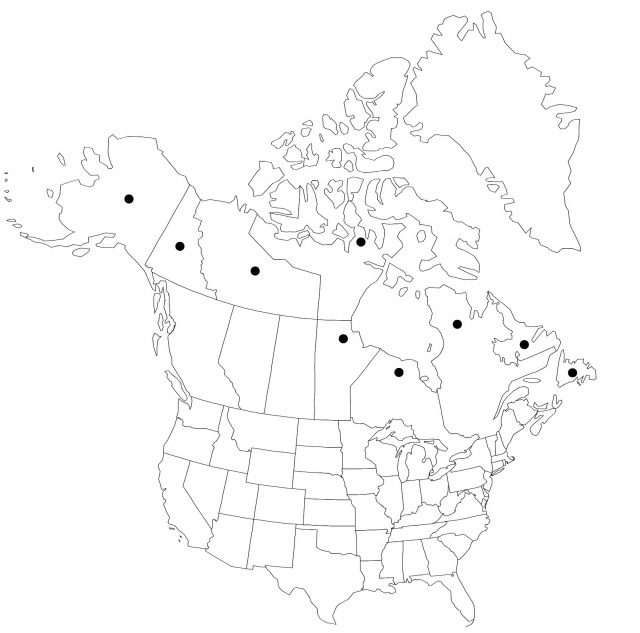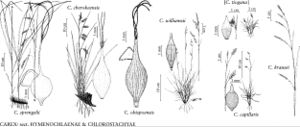Carex williamsii
Bull. New York Bot. Gard. 2: 159. 1901.
Culms to 15 (–30) cm. Leaf-blades filiform, channelled, 2–8 cm × 0.25–1 mm. Terminal spike androgynous or staminate, ± level with lateral spikes, 2–8 × 0.6–1 mm. Lateral spikes 2–5, usually suberect, 3–10-flowered, 4–10 × 2–2.5 mm. Pistillate scales pale-brown with hyaline margins and paler midvein, ovate, 1.8–2.2 × 1–1.4 mm, apex obtuse. Staminate scales brown with hyaline margins and paler midvein, oblong-lanceolate, 2.5–3 × 0.8 mm, apex obtuse or mucronate. Perigynia distinctly veined, lanceolate, 2.3–3.1 × 0.7–1 mm; beak 0.5–1 mm, margins entire or with 1 or 2 basal setae. Achenes obovoid, 1.2–1.5 × 0.7 mm.
Phenology: Fruiting summer.
Habitat: Fens, sedge meadows, moist tundra
Elevation: 0–500 m
Distribution

Man., Nfld. and Labr., N.W.T., Nunavut, Ont., Que., Yukon, Alaska, n Asia
Discussion
Á. Löve et al. (1957) reported a chromosome number of 2n = 18 for a North American plant of Carex williamsii; that number has not been confirmed. T. V. Egorova (1999) reported 2n = 46 for Asian plants of C. williamsii, which is within the range of chromosome counts reported for other species in sect. Chlorostachyae. It is not clear whether the terminal spike of C. williamsii is consistently androgynous or whether it can also be staminate. Androgynous spikes have only 1–3 perigynia that are usually hidden by the lateral spikes.
Selected References
None.
Lower Taxa
"shortened" is not a number.
